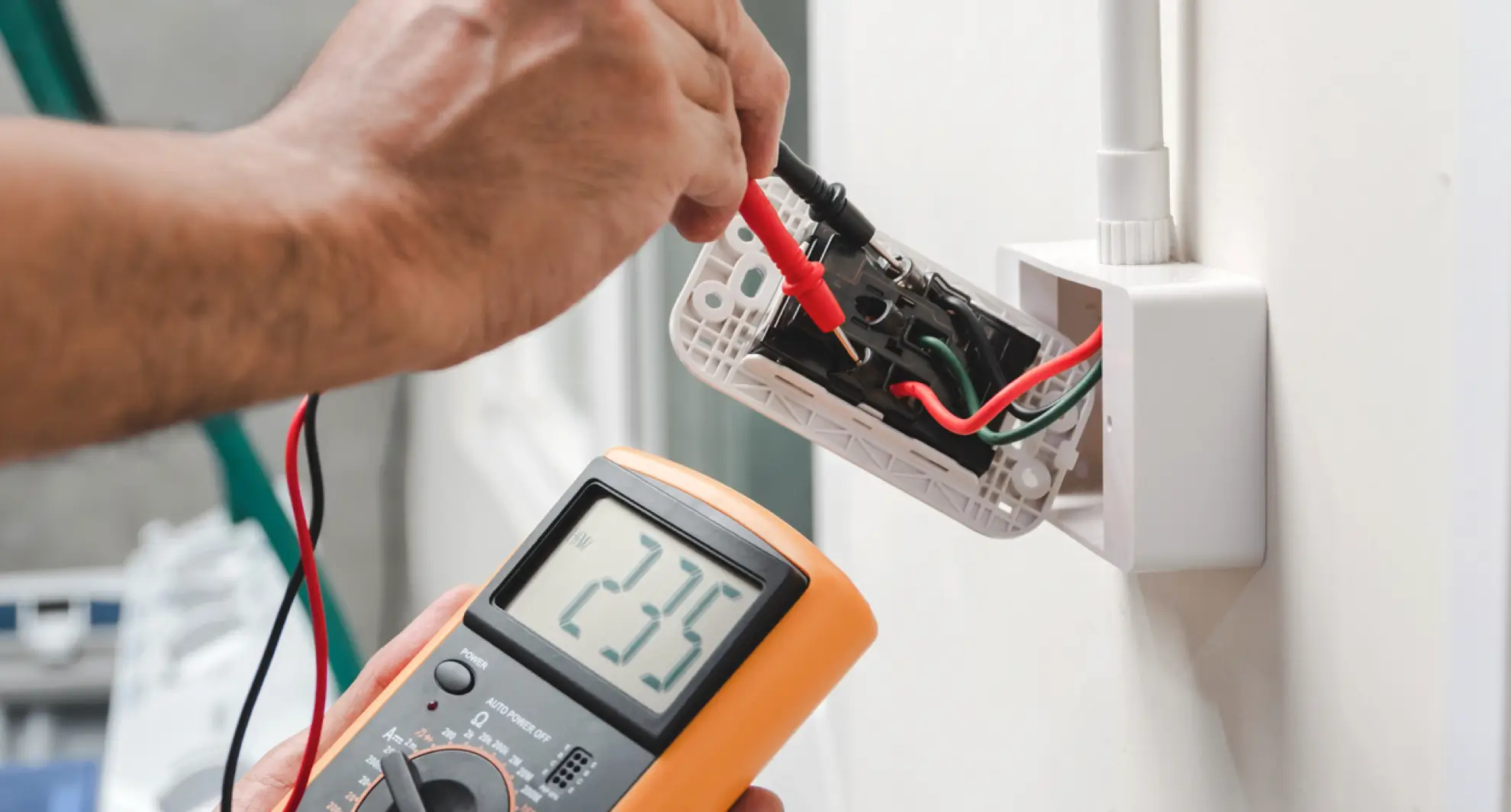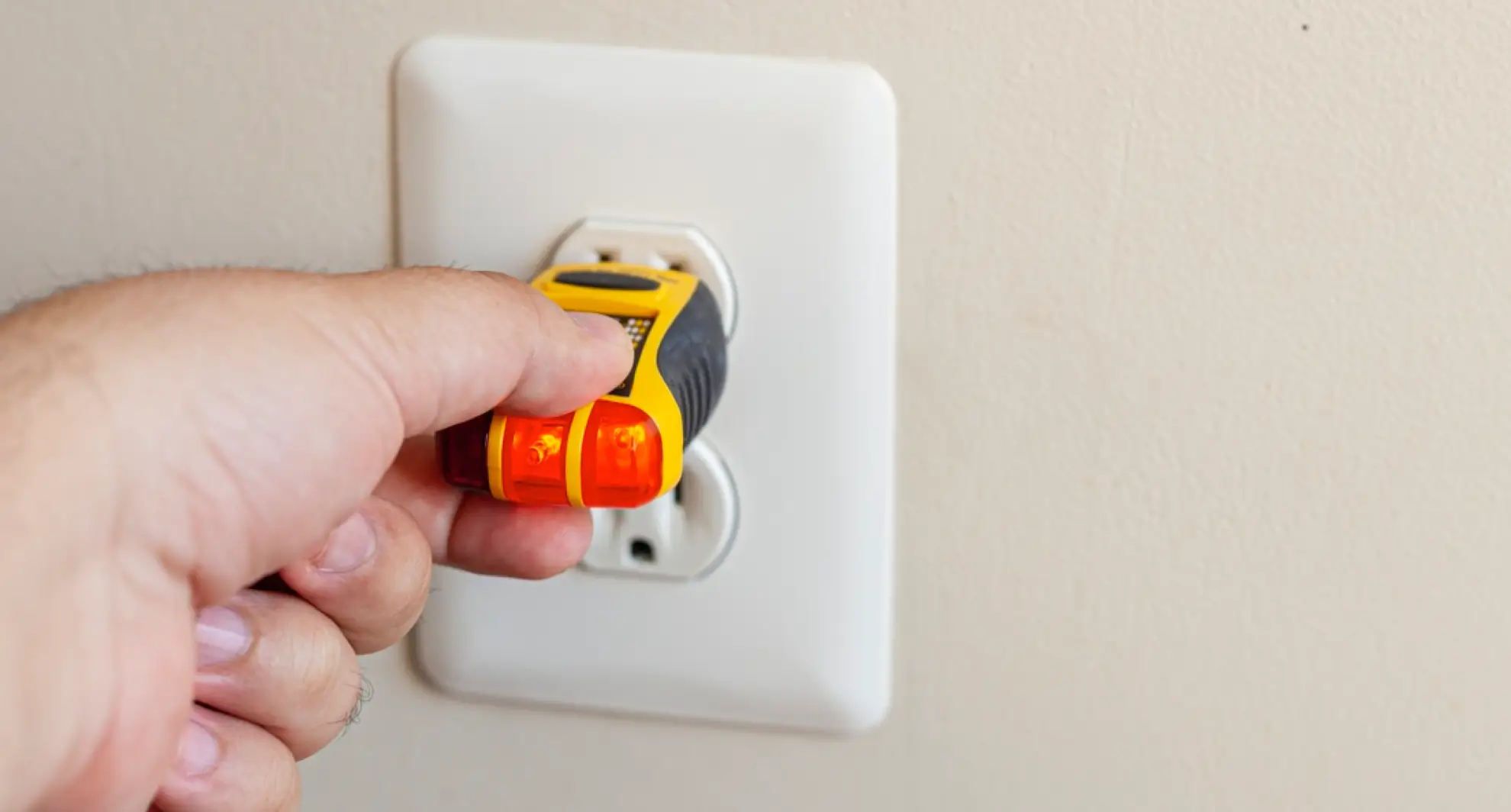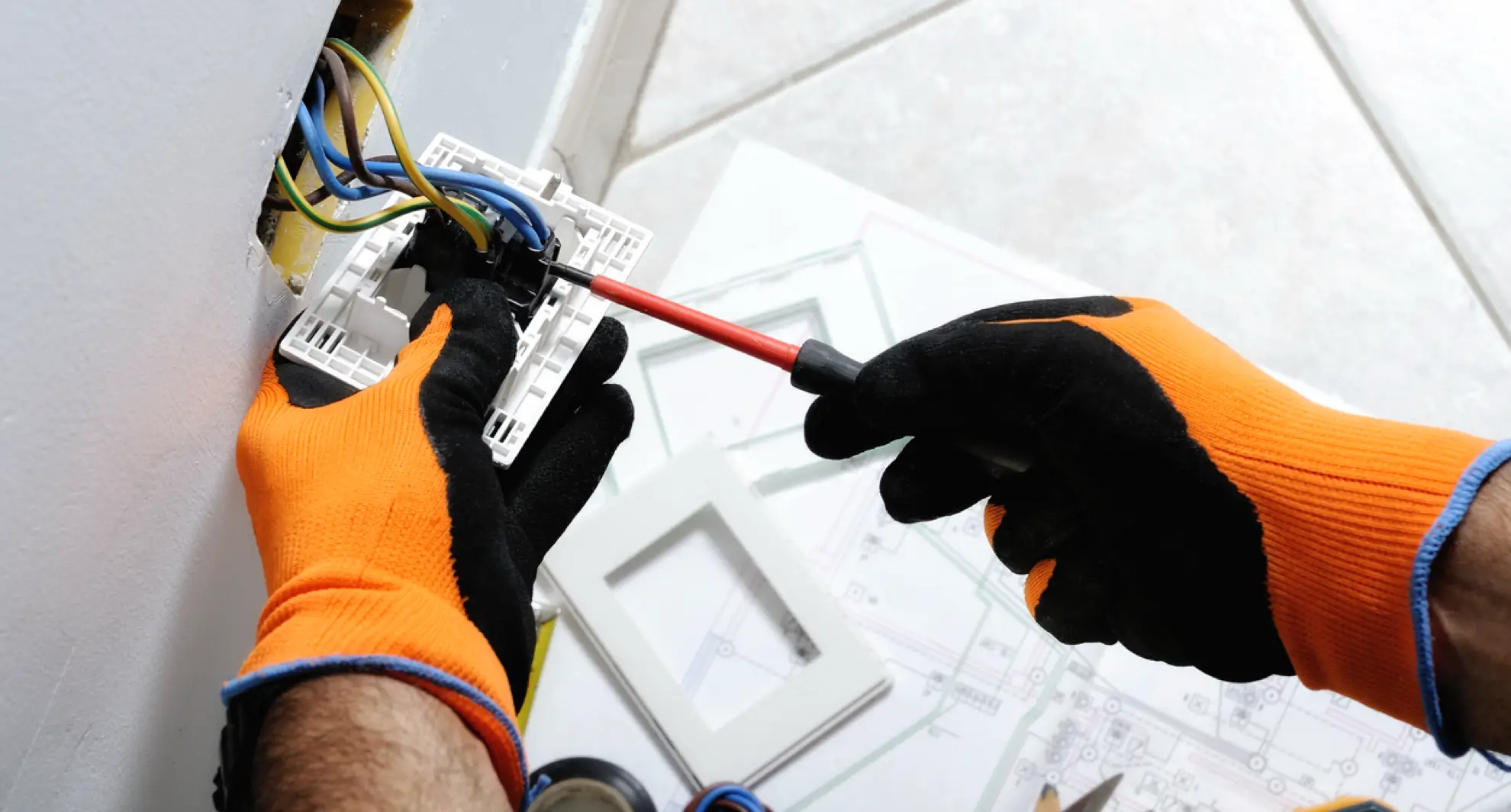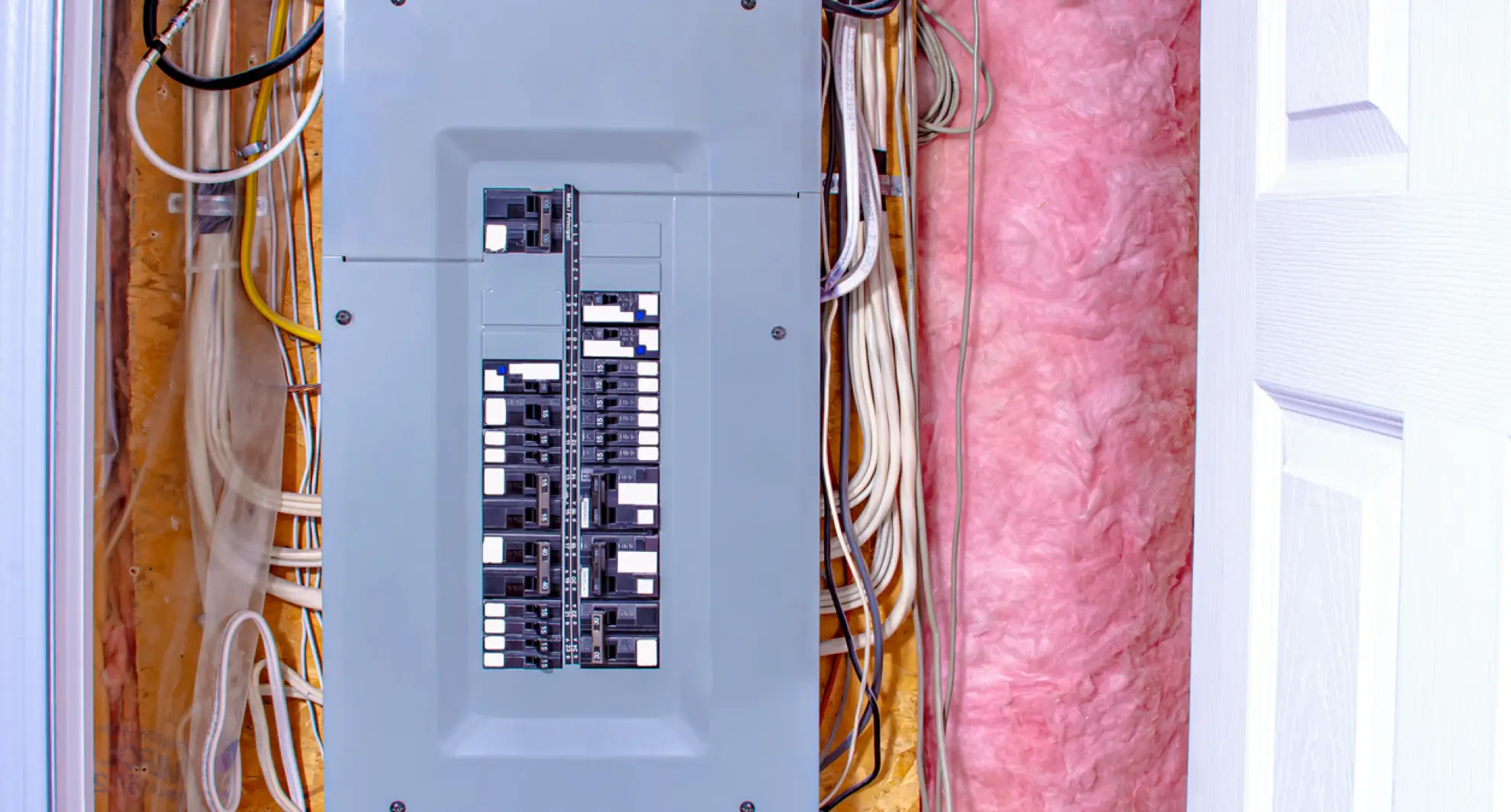
Mr. Electric recommends these troubleshooting steps if your outlet isn’t working but the breaker isn’t tripped.
|
If an outlet stopped working but the breaker's not tripped, it's enough to make you wonder what's going on. You expect an obvious fix—flip a switch, reset something simple—and move on with your day. There are a handful of common reasons an outlet can fail without taking the breaker down, and a professional electrician can help address the problem, preventing bigger issues later.
How Breakers Work
Most people assume that if an outlet quits, the breaker must have flipped. It's a logical guess, but it's not always how things play out.
Why breakers trip
Breakers trip when they detect an overload, a short circuit, or a ground fault. In simple terms, breakers are the built-in safety mechanism meant to cut power when things get dangerous. But not every electrical issue hits hard enough to throw the breaker.
Why breakers don't trip
Sometimes, if you have an outlet that's not working but the breaker's not tripped, the problem is at the outlet itself, not across the whole circuit. Loose wiring, worn-out contacts, a damaged receptacle, or a bad connection further upstream can knock out power without pulling enough current to trip the breaker.
It's the kind of thing you won't spot without proper training, and guessing wrong can put you in serious danger. Electricity doesn't give second chances, which is why this is always a job for a professional.

What to Do if a GFCI Outlet Stops Working
If a GFCI outlet's not working but the breaker's not tripped, you may have a simple fix.
GFCI (ground fault circuit interrupter) outlets are typically used in areas of high moisture (kitchens and bathrooms) to protect your electrical system. They shut off power to the outlet when an electrical overload is detected. It’s possible that a circuit overload tripped the outlet, and it just needs to be reset.
How to reset your GFCI outlet
In the middle of each GFCI outlet there are two small buttons (with reset printed on one). When tripped, the reset button will be raised, so all you need to do to restore power to the outlet is push the reset button. You should hear a "click" indicating the outlet has been reset. Plug an appliance like a hair dryer into the outlet and turn it on to test the reset. If this didn't solve the problem, contact a professional electrician to investigate further.
Note: If you notice burn marks or charring around the outlet, don’t attempt to reset it. This could be an indication of a more serious problem that requires professional service.
Related Topic: Electrical Tester – How to Use One

What to Do if You Find an Outlet's Not Working But the Breaker's Fine
Before you call in backup, there are a couple of safe steps you can take to rule out the simple stuff when it seems like there's no power to an outlet but the breaker's not tripped. Here's where to start:
- Check the device first. It sounds basic, but you'd be surprised how often the issue isn't the outlet at all. Plug a different, working device, like a phone charger or lamp, into the outlet to see if it powers up. If it doesn't, it's fair to say the outlet is the problem.
- Check for half-hot outlets. Some outlets are wired to be controlled by a wall switch, usually intended for floor lamps. If the outlet you're testing is half-hot, it won't work until you flip the corresponding light switch. It's an easy fix if you know to look for it.
- Inspect the outlet visually. Take a good look. If you see scorch marks or melting, or the faceplate feels warm to the touch, stop right there. That's a red flag for overheating or internal damage, and it's not something you can fix safely on your own.
- Look for a damaged breaker switch. Even if the breaker doesn't look tripped, it could still be faulty. Sometimes, a breaker wears out internally and stops doing its job without ever flipping to the OFF position. If a breaker feels loose, hot to the touch, or wobbly or refuses to reset cleanly, that's a problem that needs a professional's attention.
- Look for GFCI outlets nearby. If your dead outlet is downstream from a GFCI outlet, it might have been cut off by a tripped GFCI. Check any GFCIs in the kitchen, bathroom, garage, or outside and try resetting them. Sometimes a single GFCI controls several outlets, so this may be the cause if multiple outlets are not working, but the breaker's not tripped.
- Don't keep resetting if it won't stick. If a GFCI trips and immediately trips again after a reset, that's a sign there's an underlying fault somewhere. Repeatedly trying to force it back on is asking for trouble.
If none of these steps turn the lights back on, it's time to call in an electrician. Electrical problems that knock out outlets without tripping breakers usually mean deeper issues or aging circuit components hiding inside your walls. You don't save time or money by guessing; you risk a bigger, more expensive problem later.

How a Pro Can Help Troubleshoot
Professional electricians are trained and equipped to handle electrical problems, including breakers that aren’t working. So, now that we’ve covered what you can do to resolve the issue, let's review what a pro will look for:
Loose outlet
One of the first things a professional electrician will check for is a loose outlet or outlet box. If either the outlet or the electrical box is loose, it could interrupt power to the outlet. As items are repeatedly plugged in and removed from an outlet, it can cause the outlet to move and shift, which can loosen it over time. A loose outlet is not only inconvenient, it can also be dangerous and result in electrical shock.
Loose wiring
The leading cause of an electrical outlet switch not working is loose wiring. Older outlets in particular are prone to lose wiring because of how the wiring was initially installed. Outlets come with two options for wire attachment: rear slots or outlet screws. Depending on who installed the outlet and did the wiring, they may have used the rear slots, which are more prone to electrical problems.
However, using electrical screws to secure a wire to an outlet box is only safer if the electrician knows what they’re doing. Both methods can result in a wire coming loose which will affect power flowing to the outlet. Either way, a professional electrician will be able to spot loose wiring quickly and repair it.
Damaged breaker
You might be tempted simply to replace your malfunctioning outlet with a new one. If, however, your electrical outlet still is not working after replacing it, you likely have a damaged breaker. Circuit breakers are stout and long-lasting electrical devices, but they’re not invincible.
An electrical surge or short can cause the breaker to malfunction and trip, which could result in damage to the breaker. Testing and replacing a breaker is extremely dangerous and something you should definitely leave to a pro.
Dedicated circuit needed
Depending on the location of the breaker and what it’s powering, there’s a chance that it could be overloaded. This will usually trip the breaker. There’s also a chance that an overloaded breaker will fail completely. In this case, replacing the outlet and/or breaker won’t do any good because the same problem will continue to happen.
Only a professional electrician can accurately test the amount of electricity (load) on a specific circuit to determine if it is overloaded and tripping the breaker and/or the outlet. If this is the case, the outlet will have to be rewired to a different circuit, or your panel box will have to be updated.
Testing your wiring
A GFCI outlet that occasionally trips is not that big a deal. However, if you have an outlet or outlets that trip often, it could be a sign of a bigger problem. An electrician can test your entire electrical system to ensure it's operating properly and safely.
Call Mr. Electric When Outlets Stop Working—We'll Handle Them Safely and Correctly
If an outlet's stopped working but the breaker's not tripped, don't leave it to guesswork or, worse, ignore it. Electrical problems like these usually mean there's something deeper going on, and it's not worth taking chances.
The professionals at your local Mr. Electric® know the National Electrical Code inside and out, along with all the local regulations that help keep your home's wiring safe and up to standard. We'll pinpoint the real cause of the problem, fix it the right way, and make sure your electrical system is working like it should.
And we're backed by the Neighborly Done Right Promise®, which ensures you’ll be happy with our work. Contact Mr. Electric today and get your power back on with total peace of mind.
This article is intended for general guidance only and is not applicable to every situation. You are responsible for determining the proper course of action for your property and situation. Mr. Electric is not responsible for any damages that occur as a result of advice and/or guidance derived from its blog content.
Some Mr. Electric services vary by location. Contact your local Mr. Electric franchise for more information.
FAQs About Malfunctioning Breakers
The safety of you, your family, and home are the top priority of every Mr. Electric service professional. Our safety-first commitment to solving your electrical issues includes a meticulous attention to detail on every job. Our commitment also includes using our years of experience to answer your questions. Below are answers to some of the most frequently asked questions about malfunctioning breakers and outlets.
What should I do if my circuit breaker won't reset?
If your circuit breaker won't reset, it's likely there's an underlying issue causing it to trip repeatedly, such as a short circuit, an overloaded circuit, or a faulty breaker. First, ensure that all devices connected to the circuit are turned off. If the breaker still won't reset, it's time to call an electrician. They can diagnose the cause and replace any faulty parts, ensuring your electrical system stays safe.
Why are my lights flickering, but the breaker isn't tripped?
Flickering lights often indicate a problem with the electrical connection or an overloaded circuit, even if the breaker isn't tripped. This could be due to loose wiring, an issue with the light fixture, or a problem at the breaker panel. Sometimes, it could also be a sign of a power surge. It's important to get a professional electrician to inspect and fix the problem.
Can I use an outlet with scorch marks or a burnt smell?
Absolutely not. If you notice scorch marks, a burnt smell, or any signs of damage around an outlet, it's a major safety hazard. This could be caused by faulty wiring or a malfunctioning device. You must have an electrician inspect the outlet immediately to prevent further damage or fire risks.

